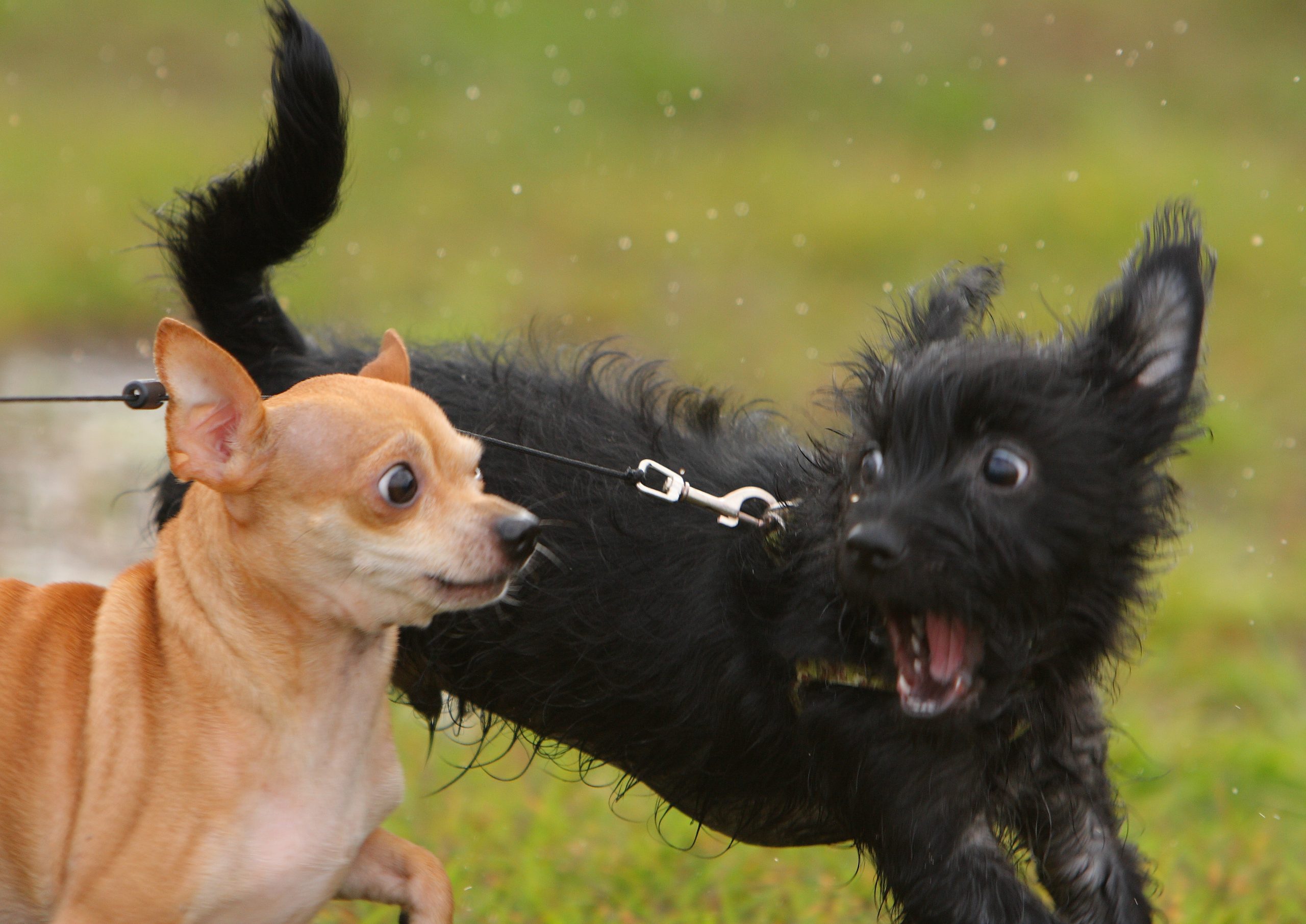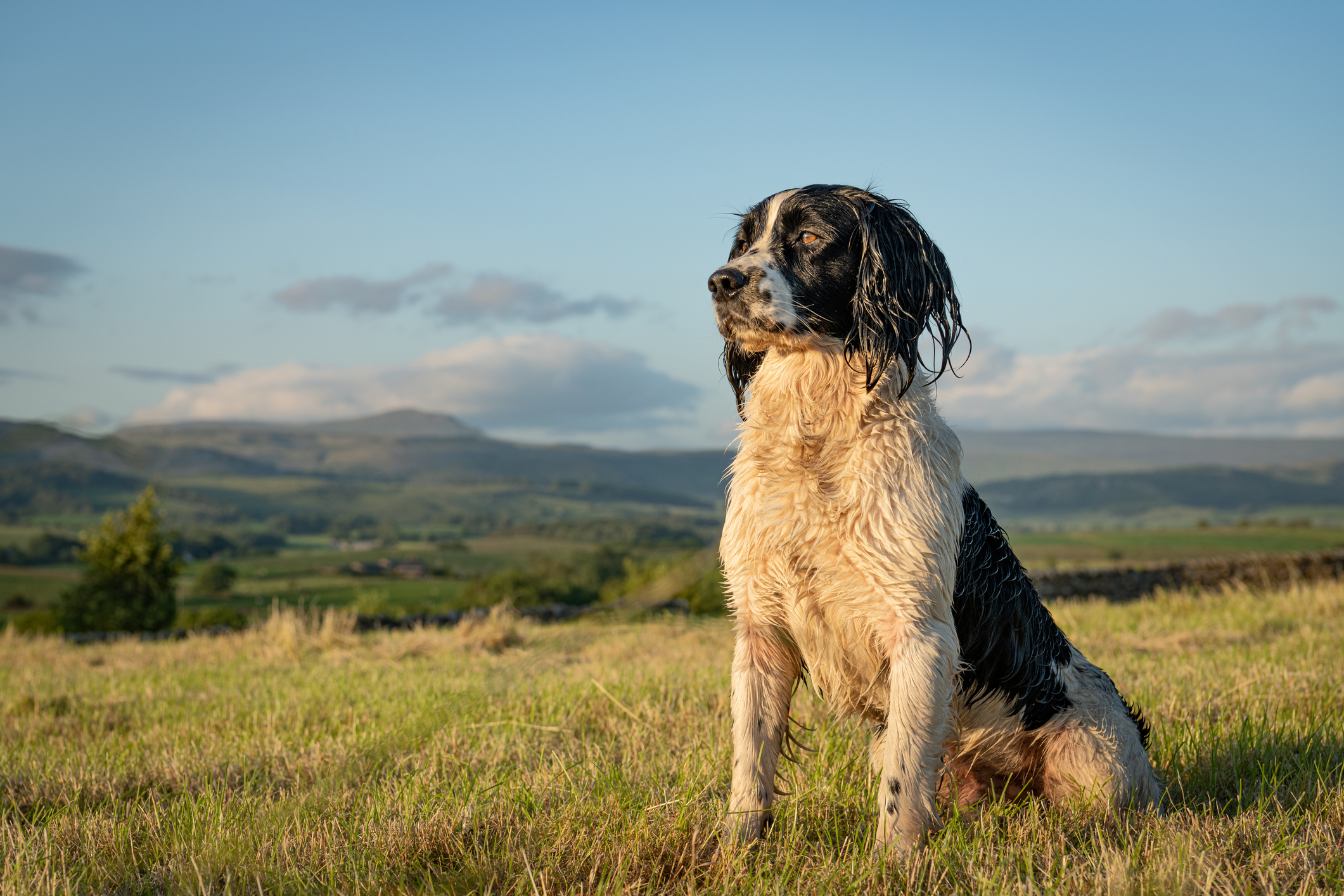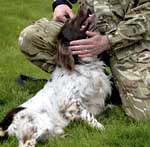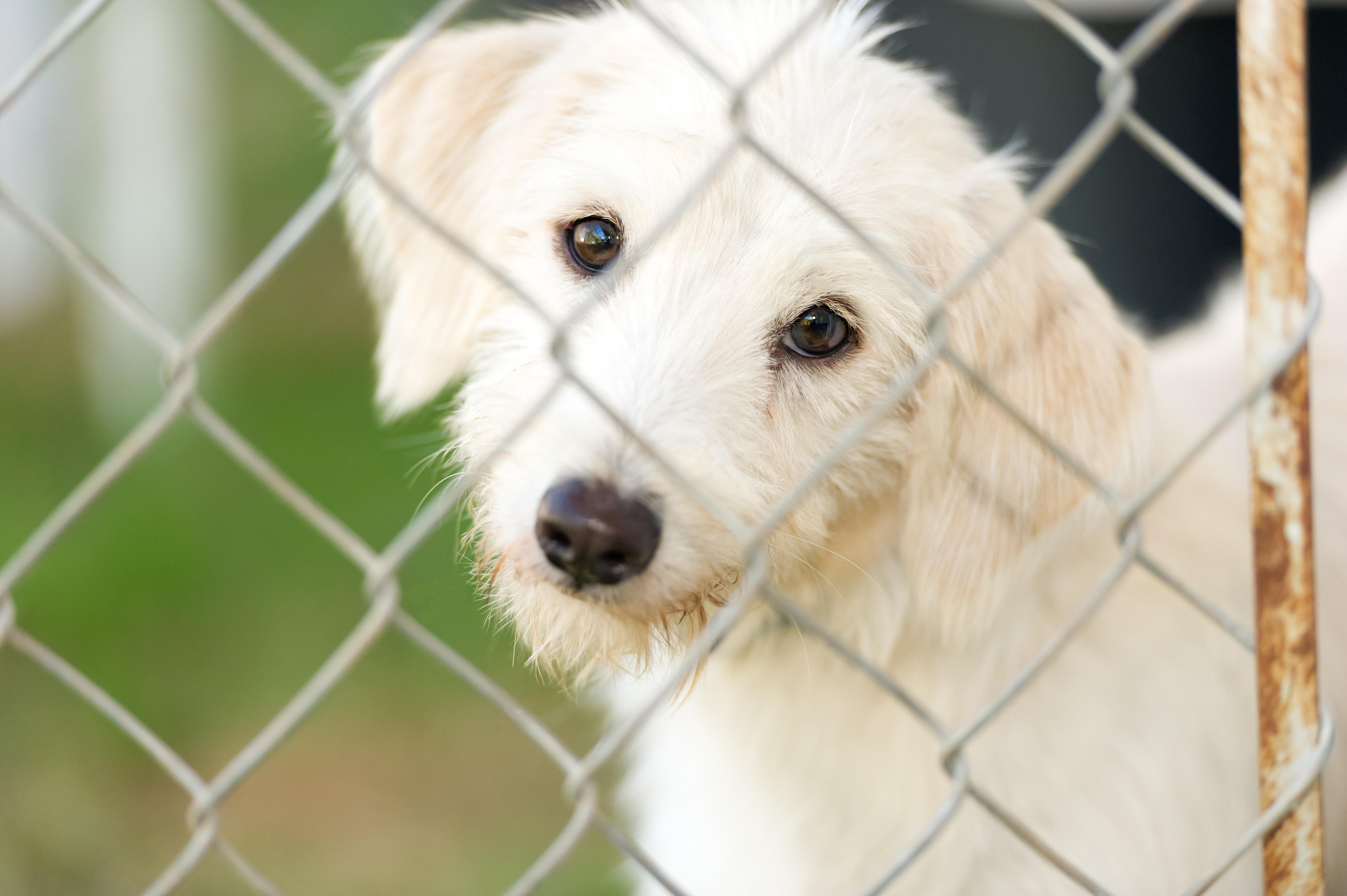How to stop your dog having a go at other dogs, by leading trainer Ben Randall
Some dogs are absolute angels around people of all ages — but for some reason can turn into little devils when around other dogs. Ben Randall takes a look at what's happening, and how to fix the problem.


When we get a dog, we envisage taking our new charge out for lots of lovely walks, when we’ll meet and chat to friendly fellow owners, as our dogs play happily in front of us. But what should we do if our canine companion gets too wound up at the prospect of meeting — let alone romping around with — his or her fellow four-legged friends?
This is exactly the issue facing L.S., who has written via our paws-for-thought@futurenet.com email address to ask for Ben’s advice on how to deal with her boisterous Springer Spaniel’s tendency to lunge at other dogs:
Dear Mr Randall,I’m the proud owner of an almost three-year-old female (spayed) Vizsla and a one and a half-year old English Springer Spaniel (not neutered yet.) I’ve a lot of work ahead of me to properly train them, but they have both graduated from group dog training in a Basic Obedience class and know basic commands: sit, wait, stay, down, place and come, etc.I’ve never owned an English Springer Spaniel before and aside from the masses of dog fur and dripping water-bowl water everywhere, he is an absolute gem of a dog around the house and with people/children.His behaviour with other dogs, though, from our point of view, is shocking.We have always had all-around friendly dogs, and it’s just plain embarrassing to see him lunge and bark at every dog we try to walk by. I’ve seen trainers online say that the thing to do is to get him out all the time to socialise him, but I just don’t really want to deal with it. They say to look ahead on your walk, put the dog at your heel or distract them with treats thrown on the ground, but that seems to last seconds, until he remembers there is a dog again and is back at it. I also have a healthy suspicion of other owners in that they may let their dog off the leash and come at us, and not understand he is not friendly. When we do venture out, I try not to show I’m nervous, but I just don’t want him to get too close to another dog and it does not go well. At this rate, he will also never be off the leash and/or outside of a fenced yard. His passion is going for walks with me, and I know if we could get on top of this it would be good for both of us.Please let me know if this behaviour can be corrected and how I might best help him be at ease with other dogs. Thank you for your consideration. — L.S.
I have owned springer spaniels for more than three decades now and can honestly say that, thanks to my training methods, I have never experienced this type of behaviour with my own dogs. And neither have those clients who have been using my BG Foundations regime.
Unfortunately, when I do see this behaviour, it’s usually because the dog and owner in question have been having lessons with a bribery-based trainer who’s used to working with pets, and with limited experience of working breeds or the gundog world.
The perfect example of this is actually in your letter: the advice to have you throwing treats on the ground to try to get your dog’s attention. It simply doesn’t work, as it encourages your dog to sniff without fixing the actual problem. A working dog’s desire to chase, retrieve and hunt always outweighs the allure of a treat.

It is also true to say that, when I come across this sort of behaviour, I know that the dog’s basic training and response to vital commands will not be as cemented as they could be. So, for example, their heel, recall and leave commands will not be reliable, and they might well have a tendency to jump up, and not listen to their owners.
If you are walking your Springer Spaniel to heel on the lead and you see another dog approaching, you should be able to give a simple ‘leave’ command, then tap your left leg and say ‘heel’. Your dog should then happily walk past another dog without lunging. Wouldn’t that be nice, I can hear you thinking…
Exquisite houses, the beauty of Nature, and how to get the most from your life, straight to your inbox.
The trouble is, by going to classes where treat or bribery training is the order of the day, I believe that it’s too easy to end up over-treating or bribing your dog, and that is never good — either for dogs or humans! It tends to encourage spoiled behaviours, and an ‘I want, unless I choose to do something else’ sort of attitude.
I’ve been perfecting my BG (Beggarbush) foundation methods for nearly 20 years and understand that even experienced dog owners come up against issues that they are not sure how to handle. However, with a little time, patience and careful retraining, I’m confident you will be able to discourage your dog from lunging at other dogs in no time. You can learn more via @beggarbush on Instagram and my dog-training app (this link will let you get a free trial) or ask me your own question by emailing paws-for-thought@futurenet.com.
Ben’s top five tips for stopping a dog lunging at other dogs:
I would like your dog, like mine, to have as much mutual respect for you as mine have for me and I have for them, so that, like my dogs, your Springer will trust that the commands you give him are positive and rewarding, which, in turn, will allow you to develop a deeper and stronger partnership.
First things first, you need to understand that taking your dog into an environment where he cannot cope with other dogs every day is not going to rectify the problem. In fact, it will only further compound these issues.
If I was with you in person, we could dramatically improve his behaviour in a matter of minutes — but as I often say, this is putting a bandaid over the issue and not really fixing it. So what follows is a proper cure, a programme of retraining that I’d like you to follow during the next few weeks:
1. Use meal times to build patience and trust
In order to rebuild your relationship with your springer, you need to encourage more trust and mutual respect between the two of you. I’d like you to start doing this at his feed times, as re-establishing his patience and ability to wait calmly before you tell him to eat his much longed for food is a great way of doing this.
I’d begin in the house, by setting his food bowl down on the floor a few feet away from him, asking him to wait, then pointing at the food bowl and saying ‘fetch’, to release him to eat his meal. Then, once he’s great at doing it inside the house, move the same drill out into your garden or back yard.
2. Make use of your other dog to help with training
Now that we have your dog sitting patiently for a meal in the garden, set things up so that your Vizsla is also eating her food at the same time, and following the same drill. This means they can both be sat there patiently while you do some daily chores, or potter around the garden, before releasing them to eat their food. We have now started a process whereby your dogs are looking for your approval — and not a treat — as their reward for calm, relaxed continued patient behaviour.

3. Keep your dog safe by teaching the vital ‘leave’ command
We now need to teach the leave command, which I have said more times than I care to remember, is the most essential instruction in our dog-training arsenal. As, quite simply, if your dog knows this command, you can quite literally save their life, by telling them to ‘leave’ that food that will poison them or ‘leave’ the cat that’s just about to run across the road in front of a car.
Although you can revisit my articles on training a dog to leave things on command articles, I’ll give a couple of examples here to get you started.
Hold the bowl in your right hand, with his food in the bowl, and a piece of a kibble in your left hand. Place the bowl under the dog’s nose, use the word ‘leave’ and reward with one piece of kibble from your left hand. Then place the bowl on the floor, in between you and the dog, at a distance of approximately 5-10m. Give the ‘leave’ command and recall your dog to your left hand side, before rewarding the dog with the piece of kibble (or whatever food you give him) from your hand.
Repeat this process, moving the bowl further and further away each time to make the exercise more tempting. However, please don’t reward him on every occasion that he ‘leaves’ the bowl, but do so after every third or fourth successful execution of the task. This will build your dog’s focus on you and he will start to trust the process more by understanding that he has to work harder and with you as a team for slightly longer to get his reward.
4. Re-establish your heel work, both on and off the lead
I know this will sound boring, particularly as you say you have already done this in dog-training classes. However, to fix this behaviour once and for all, you must re-establish your springer’s heel work, both on and off the lead.
Do this in a sterile environment that’s devoid of other dogs, smells and people, such as your garden, back yard or a tarmac tennis or basketball court that is fenced and safe. It’s also a good idea to again deploy your Vizsla to help simulate another dog walking past on the lead.
I’d recommend that you stand with your dog on the lead at 6 o’clock on an imaginary clock face, while your partner — with the Vizsla on the lead — stands opposite you at 12 o’clock
As you give the ‘heel’ command and walk towards each other, show the dog a piece of kibble in your right hand. If he breaks eye contact with you and looks at your Vizsla, give the ‘leave’ and ‘heel’ command once more. If your springer responds, reward him with the piece of kibble. Repeat this by crossing in front of each other multiple times, while showing the reward, but, as above, only give it to your on the third or fourth occasion that he has completed the drill correctly. And don’t forget to praise your Vizsla (with food or an ear rub) for playing her part, too.
5. Teach your dog a new game to play on his walks
Find a toy that he absolutely must have and then make sure that he only has access to this particular toy when you take him for a walk. However, please, under no circumstances, DO NOT over-excite your dog by throwing the toy and allowing him to chase it frantically, because, particularly as he’s a working breed, this will blow his mind and, ultimately, teach him to chase a moving object.
Use the toy to recreate what we call a ‘memory retrieve’, but please be sure to practise this in your garden or a low-distraction area before you try it out on a walk. Ask your springer dog to sit, before placing the ball (or whichever toy it is that he cannot live without) on the ground behind him. Ask him to heel away from the toy for 10 to 20 metres, then turn round and ask your dog to sit before removing his lead. Count for 5 to 10 seconds, to allow your dog to relax and pause, then point at the toy and say ‘fetch’. When he picks it up, recall him using your voice or by blowing two to three pips on your whistle and, when he returns, take the ball or the toy gently from his mouth, put your dog back on lead and place the ball or toy back in your pocket.
Your dog is now fully aware that you have the ball or the toy and will therefore watch your far more intently in anticipation of his next exciting ‘memory retrieve’.
If you do this every day, firstly in the garden and then on your walks, you should be able to gradually increase the distance of the memory retrieve up to 100 to 200 yards. As you have a gundog breed, this will allow him to use his retrieving and hunting instinct to find the ball or the toy when he arrives at the area where you left it.
If you can establish all these new techniques, with lots of repetition, you should start to see improved behaviour within a week. I wish you all the best and feel sure that, if you follow this advice to the letter, you’ll have this issue resolved in no time. Please let me know how you get on.
For more detailed advice about Ben Randall’s positive, reward-based and proven BG training methods, one-to-one training sessions, residential training or five-star dog-boarding at his BGHQ in Herefordshire, telephone 01531 670960 or visit www.ledburylodgekennels.co.uk. For a free seven-day trial of the Gundog app, which costs £24.99 a month or £249.99 a year, visit www.gundog.app/trial

Springer spaniels: Simply the best
Are spaniels the best dog breed? Country Life investigates

How to stop your dog rushing at the door, by top trainer Ben Randall
Enthusiasm and excitement are one thing, but when a dog launches itself at the door in desperation to go outside

Credit: Getty Images
What to do if all else has failed and you can't handle your dog, by expert trainer Ben Randall
The vast majority of dogs and their owners have happy lives full of fun and love; but sometimes, things just

How to choose a rescue dog, by expert trainer Ben Randall
Adopting a dog in need of a new home can be a fabulous experience that will transform your life for

Credit: Alamy
Cocker spaniel versus springer spaniel: What owners need to know
Which is the more popular spaniel, the springer or the cocker? Shooting Times's David Tomlinson weighs up the pros and

How to adopt a dog without it upsetting the pets you already have, by top trainer Ben Randall
Though some dog owners are happy to stop at one, many of us like to bring more into the home
